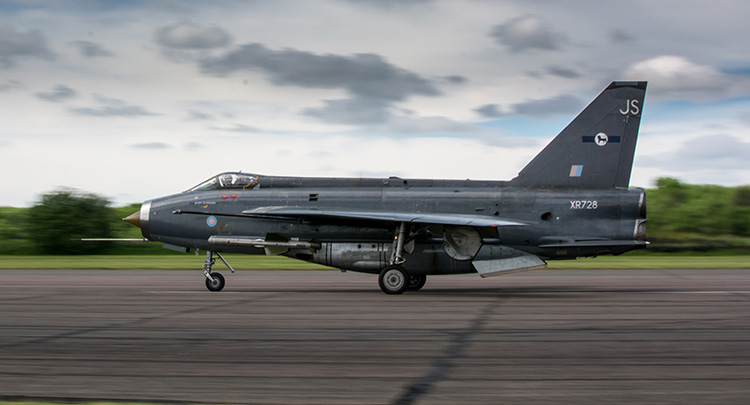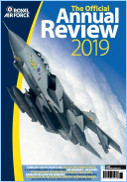|
Bruntingthorpe Cold War
Jets Day 2017 |
 |
|||
|
‘British
aviation engineering still lives and breathes on’ Those of you already familiar with the Cold
War Jets Museum at Bruntingthorpe will be well aware of the large
array of classic aircraft housed at the venue, mostly kept in
ground-running condition. Amongst the collection are many legends
of the British aviation industry that can no longer be seen
running anywhere else in the UK such as the Handley Page Victor,
Blackburn Buccaneer and English Electric Lightning.
There are numerous static aircraft
around the airfield, some of which are currently being
restored with the intention of performing fast taxi’s in the
future.
The newly painted Avro
Shakleton was looking very smart and the Super Guppy is always
worth a look. The later, along with some of the other larger
exhibits was open for boarding for a small fee. Following the
unfortunate wheels up landing of the world’s only flying De
Havilland Sea Vixen the day before, it was no surprise to see
Bruntingthropes’ own example receiving a lot of attention. The
restoration of which is going well and we look forward to
seeing this run in good time.
|
|||
 |
 |
||
The first fast taxi of the day was the Vickers VC10 which zipped down the runway loud and proud shortly after an impeccably observed two minute silence in memory of the victims of the Manchester terror attack. The Bruntingthrope VC10 ( ZD241) was the last of its type to fly and is still seen in its RAF tanker livery. The smell of burning jet fuel, a trail of smoke and vibrations that triggered numerous car alarms certainly started the show with a bang. |
|||
 |
|
||
|
This was then closely followed by two Blackburn Buccaneers which performed a slow figure of eight down the runway providing great opportunities for photographers. Although the two taxing Buccaneers were in RAF colours, the demonstration of their folding wings and arrestor hooks echoed the naval origins of this superb aircraft. The high-speed simulated take off of these two aircraft was one of the highlights of the day. A third Buccaneer was also on static display in naval markings, it is hoped that this will soon be ready to join the others in a fast taxi which will really enhance the spectacle. |
|||
 |
 |
||
|
Sadly, the pace of the day slowed a little as the complexity and logistics of maintaining these aging jets became apparent. There was a small gap in the proceedings as the De Havilland Comet and former RAF test bed ‘Canopus’ was unserviceable. The Nimrod was also moved into position ready for its performance later in the day. A wind-damaged rudder would ultimately prevent a fast taxi but it is still a spectacle hear it’s mighty Rolls Royce Spey engines kick into life. |
|||
 |
 |
||
|
There were further figure of eight demonstrations and fast taxi’s from English Electric Canberra, ‘Treble 3’ and two Jet Provost’s before a paired run from the Iskra and Delphin. Sadly the later was unable to complete its fast taxi despite the best efforts of the pilot. Once again demonstrating how frustrating it must be for the army of engineers and volunteers who maintain these aircraft. |
|||
 |
 |
||
|
Today’s
only flying item was the flypast by the Battle of Britain Memorial
flight, who sent their newly refurbished mk19 Supermarine Spitfire
which glistened in the sun as Squadron Leader Mark ‘Disco’
Discombe put it through its paces along the crowd line.The BBMF
always offer a stirring tribute to the sacrifices made during the
2nd
world war ‘lest we forget’. |
|||
 |
 |
||
The last three demonstrations
provided a reminder of the incredible engineering of the
British aircraft industry during the cold war. We were treated
to fast taxi’s from the English Electric Lightning whose
double afterburners were the loudest of the show (setting off
yet more car alarms). We were also treated to two Hawker
Hunters also and the star of the show, the Handley Page
Victor.
The
aging V bomber having recently marked the 25th
anniversary of the Black Buck raids was fittingly piloted for
today’s run by Falklands veteran Bob Tuxford. |
|||
 |
 |
||
| With a notable absence of classic jets flying in the airshow season this year, it is worth noting that this is the only place where such a wide range of classic British aviation engineering still lives and breathes on. Although operation issues, serviceability and the absence of the usually present large model aircraft meant today was not as fast paced as usual, it still provides a unique and thrilling experience. | |||
| Review by Lee Chapman |
|||










